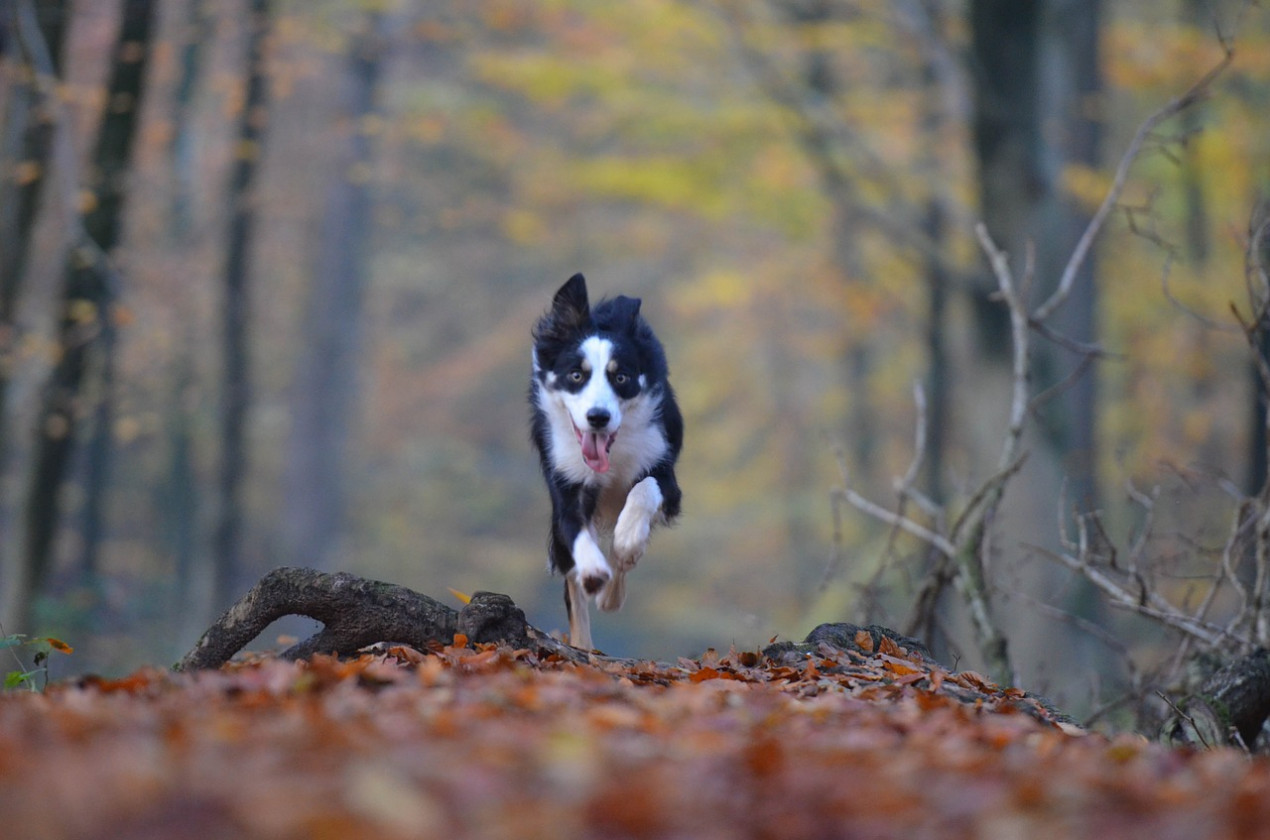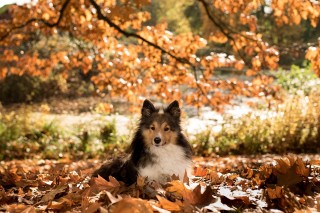The leaves have changed and there’s a chill in the air. But the autumn months do pose some hazards. Here are some tips to keep your dog safe during the autumn months.
The Animal Health Trust has been investigating seasonal canine illness (SCI) since September 2010. Cases of this mystery illness are generally seen between August and November. SCI can affect dogs of any size, shape or sex and it causes dogs to become very ill, very quickly after being walked in woodland. The most common clinical signs are sickness, diarrhoea and lethargy, typically experienced within 72 hours of walking in woodland. If you suspect your dog is showing signs of SCI then contact your vet immediately.
While serious cases of poisoning are rare, ingestion can cause marked gastro-intestinal signs such as drooling, retching, vomiting, diarrhoea and abdominal pain. The conker’s case and conkers themselves can also cause intestinal blockages. Dogs usually vomit any ingested conkers quickly so treatment to control vomiting may be needed.
Most, but not all, rodenticides in the UK contain anti-coagulant compounds that interfere with a rat’s ability to clot its own blood. One-off exposure to products bought in garden centres often does not cause problems. However, repeated exposure to products or exposure to professional rodent baits can cause disruption to a dog’s blood clotting ability and result in massive haemorrhage (bleeding). The effects may be delayed for several days – blood-clotting (coagulation) tests are often needed to determine if a dog is at risk of developing problems. Treatment involves giving an antidote and in severe cases transfusions of plasma or whole blood.
4. Luminous necklaces and glow sticks
The chemical mixture within luminous jewellery and glow sticks is very irritating to the gums – commonly causing dribbling, frothing and foaming at the mouth, vomiting and stomach pain. Thankfully, although the signs can look dramatic, ingestion is unlikely to cause significant problems.
5. Oaks and acorns
Exposure to acorns in dogs is common in the autumn and winter. The toxic ingredient is thought to be tannic acid, which can cause damage to the liver and kidneys. Signs include vomiting, diarrhoea, abdominal pain and lethargy. Ingested acorns can also cause an intestinal blockage.
6. Fallen leaves
Piles of leaves can develop bacteria and mould. If your dog ingests these it can lead to gastrointestinal upsets.
The worst of all the chemical spills is antifreeze, which can leak from a car’s radiator. Ethylene glycol ingestion is very dangerous. It is sweet tasting and very palatable and even a relatively small quantity can cause serious kidney damage and be fatal. The first signs of intoxication can be that your dog appears ‘drunk’. If you know your dog has ingested ethylene glycol or you have any concerns, contact your vet without delay. The prognosis becomes less good the longer the delay between ingestion of the antifreeze and initiation of treatment.
Chocolate sales rise around Halloween but remember it contains a stimulant called theobromine that’s poisonous to dogs. The amount of theobromine differs depending on the type of chocolate – dark chocolate has the most in it. Theobromine mainly affects the heart, central nervous system and kidneys. Signs will occur from 4-24 hours following ingestion and you may see vomiting, diarrhoea, restlessness, hyperactivity, rapid breathing, muscle tension, incoordination, increased heart rate and seizures. Read more about chocolate poisoning in dogs.
The toxic substance in grapes and raisins is unknown but it can cause kidney failure. Dogs with health problems may have an even more serious reaction so these should be avoided.
Some mushrooms are highly toxic to dogs but even fungi experts (mycologists) find it difficult to tell between them. The best bet is to ensure you keep all of them well out of your dog’s reach.
With fewer daylight hours and cold, wet weather you may find that your dog does not get as much exercise as he does in the summer. It is a good idea to monitor his weight and food intake, as you may need to reduce the amount of food you give your dog, to stop him putting on weight over the winter. If you are walking in low light or darkness consider a fluorescent jacket and/or collar. You could also attach a flashing light to your dog’s collar to make him easier to spot. Ensure he is wearing an identification disc and a microchip with up to date contact details.



